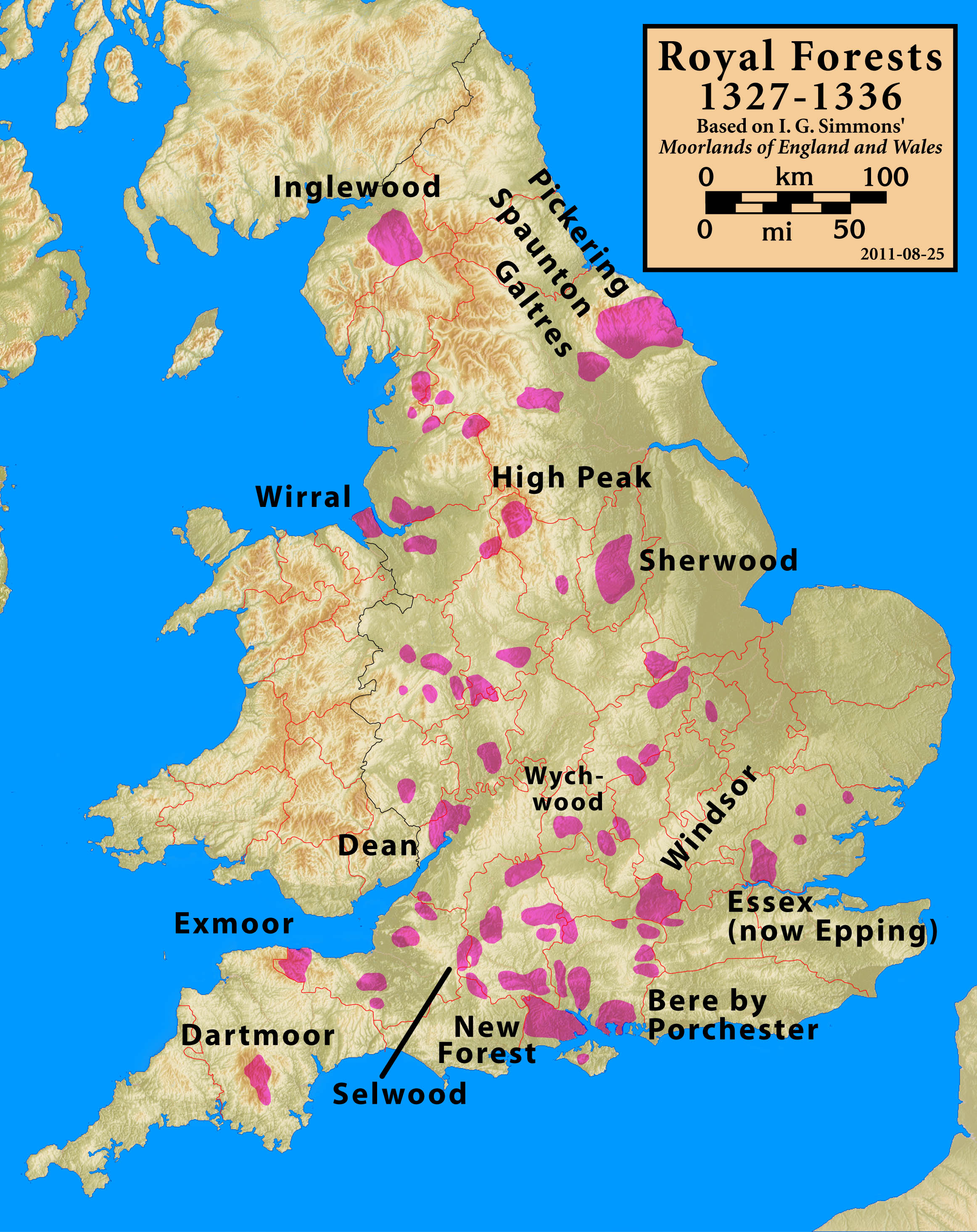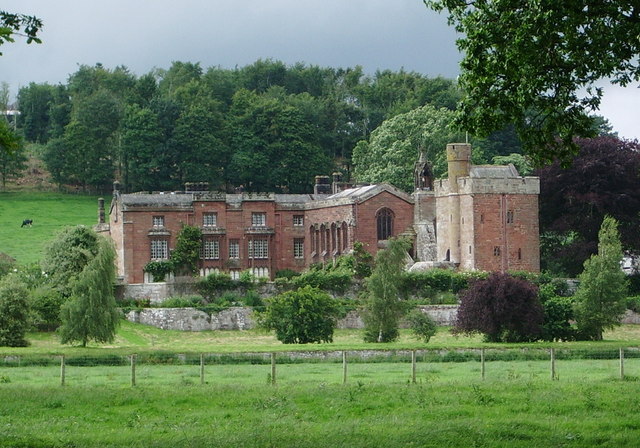|
Skelton, Cumbria
Skelton is a small village and civil parish about north west of Penrith in the English county of Cumbria. It is on the former route of the B5305 road, which is now about to the north. The parish had a population of 1,059 in 2001, increasing slightly to 1,153 at the 2011 Census. The village has a primary school, pub, and Anglican and Methodist churches. Close to the village is the Skelton transmitting station and the stately home of Hutton-in-the-Forest, the family home of Lord Inglewood. Skelton Agricultural Show is one of the largest in Cumbria and takes place on the first Saturday in July at Hutton-in-the-Forest. The large parish of Skelton includes the villages and hamlets of Ellonby, Ivegill, Lamonby, Unthank, Unthank End, Skelton Wood End, Laithes, Hutton End, Hutton Row, New Rent, Braithwaite and Middlesceugh. In 1934 the parish absorbed the former civil parishes of Hutton-in-the-Forest, and Middlesceugh and Braithwaite, plus part of Dalston Dalston () is ... [...More Info...] [...Related Items...] OR: [Wikipedia] [Google] [Baidu] |
Civil Parishes In Cumbria
A civil parish in England is the lowest unit of local government. There are 284 civil parishes in the ceremonial county of Cumbria, with most of the county being parished, and Allerdale, Copeland, Eden and South Lakeland being entirely parished. At the 2001 census, there were 359,692 people living in those 284 parishes, accounting for 73.8 per cent of the county's population. The extent of modern Civil parishes are largely geographically based on historic Church of England parish boundaries, which were ecclesiastical divisions that had acquired civil administration powers managed by the Vestry committee.Angus Winchester, 2000, ''Discovering Parish Boundaries''. Shire Publications. Princes Risborough, 96 pages History The Highways Act 1555 made parishes responsible for the upkeep of roads. Every adult inhabitant of the parish was obliged to work four days a year on the roads, providing their own tools, carts and horses; the work was overseen by an unpaid local appointee, the '' ... [...More Info...] [...Related Items...] OR: [Wikipedia] [Google] [Baidu] |
Ivegill
Ivegill is a small village in the Eden, Cumbria, Eden district, Cumbria, England. The village has one place of worship and a school. It is located on an unclassified road near Southwaite services which is on the M6 motorway. It takes its name from the River Ive which flows through the centre of the village. Nearby settlements include the villages of Southwaite, Low Braithwaite, Middlesceugh and Highbridge. See also *Listed buildings in Skelton, Cumbria References External linksCumbria County History Trust: Dalston (nb: provisional research only – see Talk page) Villages in Cumbria Eden District Inglewood Forest {{Cumbria-geo-stub ... [...More Info...] [...Related Items...] OR: [Wikipedia] [Google] [Baidu] |
Skelton, Cumbria
Skelton is a small village and civil parish about north west of Penrith in the English county of Cumbria. It is on the former route of the B5305 road, which is now about to the north. The parish had a population of 1,059 in 2001, increasing slightly to 1,153 at the 2011 Census. The village has a primary school, pub, and Anglican and Methodist churches. Close to the village is the Skelton transmitting station and the stately home of Hutton-in-the-Forest, the family home of Lord Inglewood. Skelton Agricultural Show is one of the largest in Cumbria and takes place on the first Saturday in July at Hutton-in-the-Forest. The large parish of Skelton includes the villages and hamlets of Ellonby, Ivegill, Lamonby, Unthank, Unthank End, Skelton Wood End, Laithes, Hutton End, Hutton Row, New Rent, Braithwaite and Middlesceugh. In 1934 the parish absorbed the former civil parishes of Hutton-in-the-Forest, and Middlesceugh and Braithwaite, plus part of Dalston Dalston () is ... [...More Info...] [...Related Items...] OR: [Wikipedia] [Google] [Baidu] |
Listed Buildings In Skelton, Cumbria
Skelton is a civil parish in the Eden District, Cumbria, England. It contains 56 listed buildings that are recorded in the National Heritage List for England. Of these, three are listed at Grade I, the highest of the three grades, three are at Grade II*, the middle grade, and the others are at Grade II, the lowest grade. The parish is mainly rural, and contains a number of villages and smaller settlements, including Skelton, Ellonby, Lamonby, Unthank, Unthank End, Laithes, and Ivegill. Most of the listed buildings are country houses and smaller houses with associated structures, farmhouses and farm buildings. The other listed buildings include churches and structures in the churchyards, a chapel, a bridge, a boundary stone, and a war memorial lych gate. __NOTOC__ Key Buildings References Citations Sources * * * * * * * * * * * * * * * * * * * * * * * * * * * * * * * * * * * * * * * * * * * * * * * * * * * * * * * * * * {{DEFAULTSORT:Skelton, Cumb ... [...More Info...] [...Related Items...] OR: [Wikipedia] [Google] [Baidu] |
Wards And Electoral Divisions Of The United Kingdom
The wards and electoral divisions in the United Kingdom are electoral districts at sub-national level, represented by one or more councillors. The ward is the primary unit of English electoral geography for civil parishes and borough and district councils, the electoral ward is the unit used by Welsh principal councils, while the electoral division is the unit used by English county councils and some unitary authorities. Each ward/division has an average electorate of about 5,500 people, but ward population counts can vary substantially. As of 2021 there are 8,694 electoral wards/divisions in the UK. England The London boroughs, metropolitan boroughs and non-metropolitan districts (including most unitary authorities) are divided into wards for local elections. However, county council elections (as well as those for several unitary councils which were formerly county councils, such as the Isle of Wight and Shropshire Councils) instead use the term ''electoral division''. ... [...More Info...] [...Related Items...] OR: [Wikipedia] [Google] [Baidu] |
Inglewood Forest
Inglewood Forest is a large tract of mainly arable and dairy farm land with a few small woodland areas between Carlisle and Penrith in the English non-metropolitan county of Cumbria or ancient county of Cumberland. Etymology ''Inglewood'' is first attested in the forms ''Englewod’'' (c. 1150), ''Engelwode'' (c. 1158) and ''Englewud'' (1227). The name means "Wood of the English or Angles". This seems to reflect a situation where, at the time of the name's formation, Cumbria was still predominantly a Celtic-speaking region, and sometimes part of the Kingdom of Strathclyde, and English settlement or land-ownership was still unusual enough to be a distinctive feature in a place-name. Noting that the other place-names of this kind are in places that were border areas between English-speaking and Britonnic-speaking cultures, Jayne Carroll and John Baker suggest that "this is perhaps not a case of a 'minority population' name, but one used with a particular political significance to ... [...More Info...] [...Related Items...] OR: [Wikipedia] [Google] [Baidu] |
Royal Forest
A royal forest, occasionally known as a kingswood (), is an area of land with different definitions in England, Wales, Scotland and Ireland. The term ''forest'' in the ordinary modern understanding refers to an area of wooded land; however, the original medieval sense was closer to the modern idea of a "preserve" – i.e. land legally set aside for specific purposes such as royal hunting – with less emphasis on its composition. There are also differing and contextual interpretations in Continental Europe derived from the Carolingian and Merovingian legal systems. In Anglo-Saxon England, though the kings were great huntsmen, they never set aside areas declared to be "outside" (Latin ''foris'') the law of the land. H. R. Loyn, ''Anglo-Saxon England and the Norman Conquest'' 2nd ed. 1991:378-82. Historians find no evidence of the Anglo-Saxon monarchs (c. 500 to 1066) creating forests. However, under the Norman kings (after 1066), by royal prerogative forest law was widely appl ... [...More Info...] [...Related Items...] OR: [Wikipedia] [Google] [Baidu] |
Hesket, Cumbria
Hesket (also Hesket-in-the-Forest) is a large civil parish in the Eden District of Cumbria, England, on the main A6 between Carlisle and Penrith. At the 2001 census it had a population of 2,363, increasing to 2,588 at the 2011 census, and estimated at 2,774 in 2019. The parish formed in 1894 with the passing of the Local Government Act 1894 and was enlarged to incorporate the parish of Plumpton Wall following a County Review Order in 1934. Hesket is part of the historic royal hunting ground of Inglewood Forest. Settlement in the parish dates back to the Roman occupation. Extent The parish is located between the city of Carlisle and the market town of Penrith, along nine miles of the A6. The parish encompasses the villages of Armathwaite, Calthwaite, High Hesket, Low Hesket, Plumpton and Southwaite, as well as the hamlets of Aiketgate, Morton, Old Town, Thiefside, Petteril Green and Plumpton Foot. It also includes parts of the villages of Ivegill and Wreay, with these v ... [...More Info...] [...Related Items...] OR: [Wikipedia] [Google] [Baidu] |
Dalston, Cumbria
Dalston is a large village and civil parish within the Carlisle district of Cumbria, historically part of Cumberland. It is situated on the B5299 road south-south-west of Carlisle city centre, and approximately from Junction 42 of the M6 motorway. The village is on the River Caldew, just to the north of where the Roe Beck joins the river. It is served by the Dalston railway station on the Cumbrian Coast Line between , + . Historic buildings Rose Castle, home of the Bishop of Carlisle for many centuries until 2009, is within the parish of Dalston, from the heart of the village. The Architects Anthony Salvin and Thomas Rickman were responsible for the alterations which took place in the 19th Century. Dalston Hall is a grade II* listed fortified house which is now a country house hotel. Dalston has two churches; St Michael's + All Angels Church. Governance There is a county electoral division of Dalston, stretching north towards Carlisle, with a total population a ... [...More Info...] [...Related Items...] OR: [Wikipedia] [Google] [Baidu] |
Middlesceugh
Middlesceugh is a hamlet in the civil parish of Skelton, in the Eden district, in the county of Cumbria, England. Middlesceugh has a SSSI A Site of Special Scientific Interest (SSSI) in Great Britain or an Area of Special Scientific Interest (ASSI) in the Isle of Man and Northern Ireland is a conservation designation denoting a protected area in the United Kingdom and Isle o ... called Middlesceugh Woods And Pastures. References External links * http://www.genuki.org.uk/big/eng/CUL/Carlisle/StMary/index.html Hamlets in Cumbria Skelton, Cumbria Inglewood Forest {{cumbria-geo-stub ... [...More Info...] [...Related Items...] OR: [Wikipedia] [Google] [Baidu] |
Laithes
Laithes is a hamlet in the civil parish of Skelton, in the English county of Cumbria. It belongs to Eden District. Laithes's region is North West. Height is 170.6m. See also *Listed buildings in Skelton, Cumbria Skelton is a civil parish in the Eden District, Cumbria, England. It contains 56 listed buildings that are recorded in the National Heritage List for England. Of these, three are listed at Grade I, the highest of the three grades, three are ... *Philip's Street Atlas (page 70) References * Hamlets in Cumbria Skelton, Cumbria {{Cumbria-geo-stub ... [...More Info...] [...Related Items...] OR: [Wikipedia] [Google] [Baidu] |
Unthank End
Unthank End is a hamlet in Cumbria, England. See also *Listed buildings in Skelton, Cumbria Skelton is a civil parish in the Eden District, Cumbria, England. It contains 56 listed buildings that are recorded in the National Heritage List for England. Of these, three are listed at Grade I, the highest of the three grades, three are ... References UK Coal Board* Hamlets in Cumbria Skelton, Cumbria {{Cumbria-geo-stub ... [...More Info...] [...Related Items...] OR: [Wikipedia] [Google] [Baidu] |




